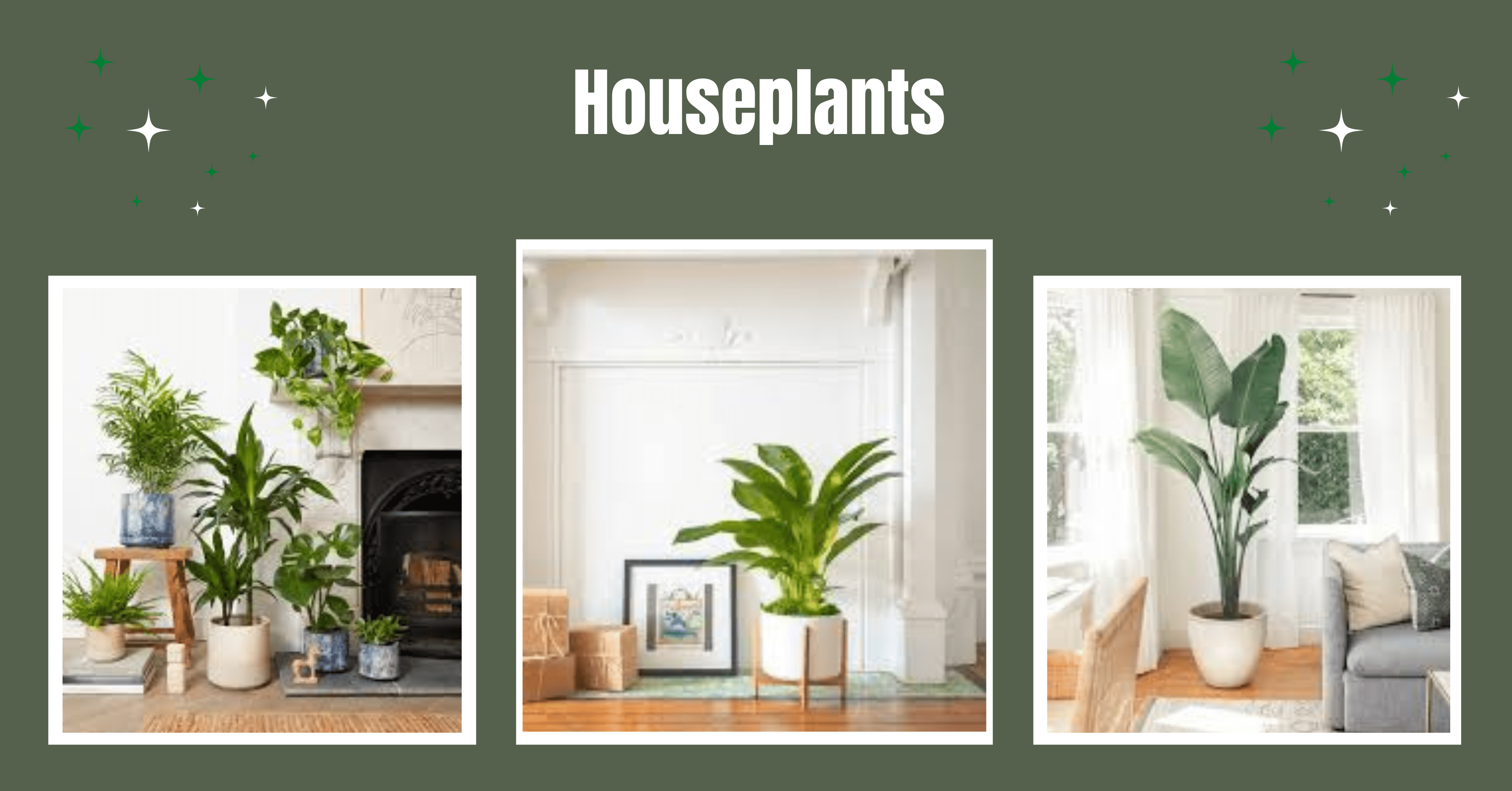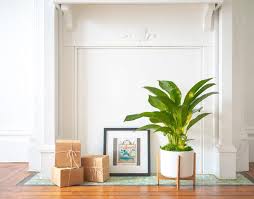Houseplants have become an essential part of modern home decor. Not only do they enhance the beauty of your space, but they also provide numerous health benefits, including improving air quality, reducing stress, and even boosting productivity. Whether you’re a seasoned plant enthusiast or a beginner, this guide covers everything you need to know about houseplants.
Why Are Houseplants So Popular?
Houseplants are more than just green companions. Their increasing popularity can be attributed to the following reasons:
Air purification:
Some plants can remove toxins from the air, improving indoor air quality.
Mental health benefits
Caring for plants has been shown to reduce stress and anxiety, promoting mindfulness and well-being.
Interior aesthetics
Houseplants add life, color, and texture to interior spaces, creating a calming, natural atmosphere.
Productivity boost
Studies suggest that having plants in your workspace can enhance focus and creativity.
With so many benefits, it’s no wonder that more people are incorporating houseplants into their homes and offices.
Choosing the Right Houseplants for Your Space
Selecting the right plants for your home is crucial for their success and longevity. Consider the following factors when choosing houseplants:
Light Requirements
- Low light: If you have dim areas in your home, consider plants like the snake plant, ZZ plant, or peace lily. These plants can thrive in indirect or low light conditions.
- Medium light: For spaces with moderate lighting, such as rooms with north-facing windows, pothos, spider plants, and Boston ferns are great choices.
- Bright light: If you have bright, direct sunlight, succulents, cacti, and fiddle leaf figs will flourish in these conditions.
Space Considerations
- Small spaces: Choose compact plants like aloe vera, succulents, or small philodendrons for tight spots like desks, shelves, or windowsills.
- Larger spaces: For open living areas or entryways, larger plants like monstera, rubber plants, or bird of paradise can make a bold statement and create a lush, green focal point.
Care Level
- Low-maintenance plants: Beginners or busy individuals should opt for easy-to-care-for plants like snake plants, ZZ plants, and pothos. These plants are hardy and can tolerate some neglect.
- High-maintenance plants: If you’re up for a challenge, plants like orchids, ferns, or the fiddle leaf fig require more attention and specific conditions to thrive.
How to Care for Your Houseplants
Caring for houseplants involves more than just watering them. To help your plants thrive, you need to understand their specific needs regarding water, light, soil, and more.
Watering Your Plants
Watering is one of the most crucial aspects of houseplant care. However, overwatering is a common mistake many plant owners make. Here’s how to get it right:
- Watering frequency: Most houseplants should be watered when the top inch of soil is dry. Plants like succulents and cacti need less frequent watering, typically every 2-3 weeks, while tropical plants may need more consistent moisture.
- Watering method: Use room-temperature water and pour it evenly over the soil, allowing the water to drain through the pot’s drainage holes. Be sure to empty the saucer to avoid root rot.
Light Needs
Each plant has different light requirements. Understanding whether your plant needs low, medium, or bright light will ensure its health and growth. For example:
- Low light plants: Snake plants, ZZ plants
- Medium light plants: Peace lily, philodendron
- Bright light plants: Succulents, cacti, fiddle leaf figs
Rotate your plants regularly to ensure they receive even sunlight, as they naturally grow towards the light source.
Humidity and Temperature
Most houseplants thrive in a humidity range of 40-60%. If the air in your home is too dry (especially during winter), consider misting your plants or using a humidifier to maintain optimal humidity levels. Tropical plants, like ferns, prefer higher humidity, while succulents and cacti do well in drier environments.
As for temperature, most houseplants prefer temperatures between 65-75°F (18-24°C). Avoid placing plants near drafts, heaters, or air conditioners, as sudden temperature changes can stress them.
Fertilizing Your Plants
Houseplants need nutrients to grow, and fertilizing is essential during the growing season (spring and summer). Use a balanced, water-soluble fertilizer every 4-6 weeks to promote healthy growth. Reduce or stop fertilizing in the fall and winter when most plants enter a dormant phase.
Common Houseplant Issues and Solutions
Even with the best care, houseplants can face challenges. Here are some common problems and how to address them:
Yellowing Leaves
Yellow leaves can be a sign of overwatering or underwatering. Check the soil moisture and adjust your watering routine accordingly. Make sure your pot has proper drainage to prevent root rot.
Brown Leaf Tips
Brown tips on leaves often indicate low humidity, underwatering, or a build-up of salts from fertilizers. Increase humidity by misting the plant, ensure regular watering, and consider flushing the soil with water to remove excess salts.
Pests
Common houseplant pests include spider mites, aphids, and mealybugs. To get rid of them, isolate the affected plant and wipe the leaves with a damp cloth. Use insecticidal soap or neem oil to treat infestations and prevent future outbreaks.
The watering frequency depends on the plant type, the pot size, and the indoor climate. Generally, most houseplants should be watered when the top inch of soil is dry. Succulents and cacti need less frequent watering, while tropical plants may require more.
Yes, several houseplants can thrive in low-light conditions. Plants like snake, ZZ, and peace lilies are excellent choices for spaces with little natural light.
Some of the easiest houseplants to care for include snake plants, pothos, spider plants, and ZZ plants. These plants are resilient, low-maintenance, and can tolerate neglect.
If your plant is getting too much light, its leaves may become scorched, turning brown or crispy. If it’s not receiving enough light, the plant may become leggy (stretched out) as it tries to reach for light, and its leaves may lose color.
Yes, several houseplants, such as peace lilies, spider plants, and snake plants, are known to remove toxins from the air, improving indoor air quality. They absorb pollutants like formaldehyde, benzene, and carbon monoxide, making your home environment healthier.
To increase humidity, you can mist your plants regularly, place a humidity tray (a shallow tray filled with water and pebbles) under the plant, or use a humidifier in the room. Grouping plants together can also create a microclimate with higher humidity levels.
Yellow leaves can be a result of overwatering, underwatering, or nutrient deficiency. Check the soil moisture and ensure your plant is in the right environment. Yellowing can also be a sign of aging, which is normal for older leaves.
Tap water is generally safe for most houseplants, but some plants are sensitive to chlorine and fluoride, which are commonly found in tap water. If you’re concerned, you can let the water sit out overnight to allow the chemicals to dissipate, or use filtered water.
Conclusion
Houseplants are a wonderful addition to any home, offering beauty, health benefits, and a sense of tranquility. With the right care and attention, even beginners can successfully grow and maintain a thriving indoor garden. By understanding your plants’ specific needs for light, water, and nutrients, you can enjoy a beautiful and healthy collection of houseplants for years to come. Visit more.





